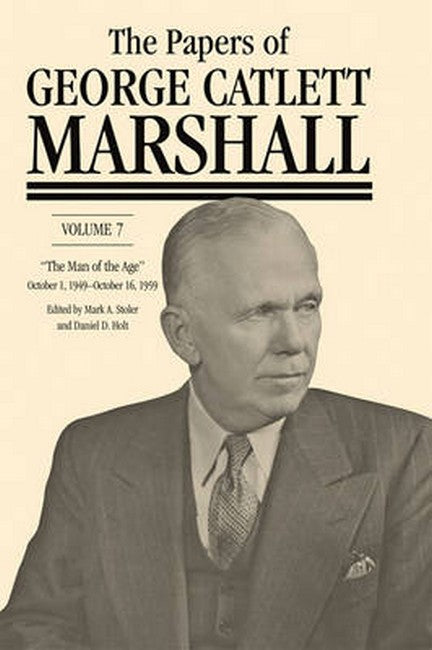Preface
Guide to Editorial Policies
Illustrations
Chronology: January 8, 1947September 30, 1949
Into the Fire: January 8 June 30, 1947
A Turning Point: July 1December 31, 1947
Under the Cross Fire: January 1 June 30, 1948
Peace with Justice: July 2December 27, 1948
A Free Agent: January 3 September 29, 1949
Appendix: Published Congressional Testimony of George C. Marshall, 1947 1949
Charts and Maps
Glossary
Index
Request Academic Copy
Please copy the ISBN for submitting review copy form
Description
""This book, like others in the series, will be of great value to scholars of twentieth-century U.S. history. The editor's masterly work in selecting, organizing, and annotating the documents provides valuable context and helpful references to other resources.""
George Catlett Marshalls two years as secretary of state, from January 1947 to January 1949, remain among the most eventful in the history of both the State Department and American foreign policy in general. The period covered in volume 6 of The Papers of George Catlett Marshall saw the formal break between the United States and its Soviet wartime ally and the beginning of the cold war; civil wars in Greece and China; decolonization and independence for India, Pakistan, and Israel; the Truman Doctrine; the Marshall Plan; the Berlin blockade and airlift; the North Atlantic Treaty Organization; and the Organization of American States.Secretary of State Marshall played a pivotal role in the transformation of American relations with the rest of the world during these years. Not only was he President Harry S. Trumans key adviser in foreign affairs, he also proposed the European Recovery Program that bears his name. Implementing this and other U.S. foreign policies required attendance at a large number of international conferences in 1947 and 1948 and an even larger number of Senate and House committee hearings. His testimony at these hearingsand his close relations with legislative leadersproved crucial to establishing the extraordinary bipartisan congressional approval of his proposals, and so, too, did his numerous public appearances to cultivate broad public support for his programs. Marshall retired at the beginning of 1949, but his respite from public service would be short-lived.

